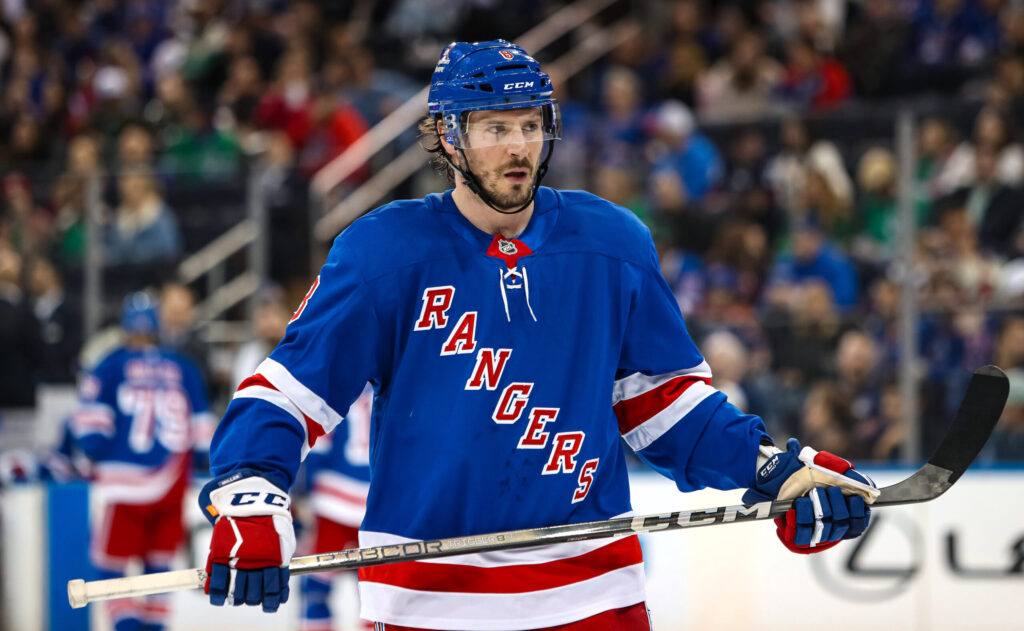After a 2024-25 season that can only be described as a disaster, the New York Rangers’ front office went to work. The mission was clear: a significant course correction and a swift return to playoff contention. With a new coach behind the bench in Mike Sullivan and some significant roster shuffling, the focus now shifts to a forward group that looks radically different, yet brimming with potential. The departure of captain Chris Kreider was a seismic event, but the re-acquisition of a familiar, fiery face and a renewed commitment to physicality and youth development have reshaped the team’s offensive identity. Let’s break down the state of the Rangers’ forwards heading into the 2025-26 campaign.
Also on the EDGE – Boom or Bust on Broadway: Are the 2025-26 Rangers Rebuilt or Just Rearranged?
The High-Octane Trio: Panarin’s Last Dance, Miller’s Return, and Zibanejad’s Rebirth
The success of any Rangers’ season starts and ends with their top-end talent, and this year is no different, though the configuration has changed. At the forefront is Artemi Panarin. Arguably the best free-agent signing in franchise history, “The Breadman” continues to be an offensive dynamo, leading the team with 89 points last season. However, a massive cloud looms over his future. Entering the final year of his mammoth contract, Panarin’s status is the team’s biggest question mark. With titans like Connor McDavid and Jack Eichel potentially hitting the market next summer, the front office seems content to play a wait-and-see game. If the Rangers are on the outside of the playoff picture come the trade deadline, expect Panarin’s name to be at the top of every insider’s trade board, capable of bringing back a king’s ransom.
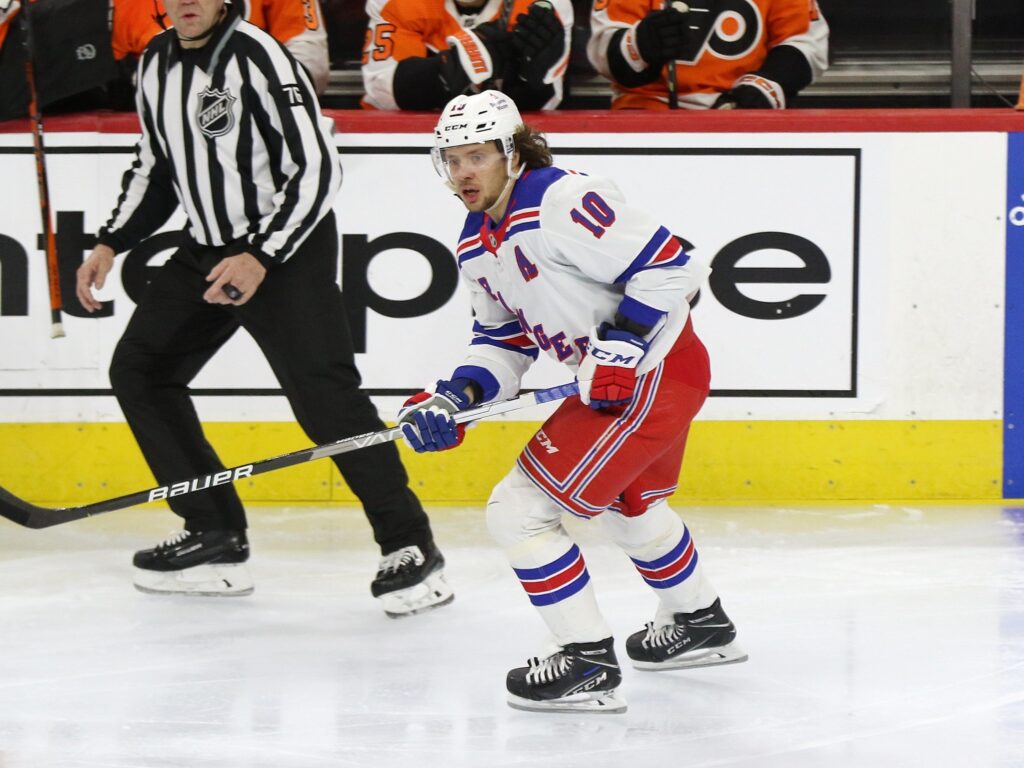
The most significant addition is a returning one: J.T. Miller. Acquired from Vancouver on Jan. 31, Miller’s impact was immediate and profound. He wasn’t just a point-producer—racking up an impressive 35 points in 32 games—he was a force of nature. His 57.6% faceoff win rate filled a massive void, but it was his hard-edged, fiery intensity that the team so desperately needed. The hope in the organization is that Miller’s aggressive nature will be contagious, pulling more passive teammates into the fight. With a full offseason to settle in, the expectation is that he will replicate his 103-point form from 2023-24 and establish himself as the team’s undisputed leader, perhaps even earning the ‘C’ left vacant by Kreider.
Miller’s arrival directly correlated with the resurgence of Mika Zibanejad. After a dreadful start to the 2024-25 season, Zibanejad looked like a shadow of his former self. The solution? Moving him from center to the right wing on a line centered by Miller. The results were staggering: 11 goals and 33 points in his final 32 games. It’s clear that freeing Zibanejad from the heavy defensive responsibilities of a top-six center allows his offensive instincts to flourish. While the team’s center depth could benefit from him down the middle, it’s widely accepted that his best hockey is played on the flank. Under Sullivan, expect to see him stay on the wing full-time, poised for a major bounce-back season.
The Supporting Cast: Grit, Youth, and Redemption
Beyond the big guns, the Rangers boast a fascinating mix of reliable veterans and young players with something to prove. Vincent Trocheck remains one of the league’s most underrated centers. His production dipped last season, but his value isn’t measured in points alone. Trocheck is a 200-foot player who logs tough minutes against the opposition’s best, a perfect two-way presence to anchor the second line. More importantly, he’s seen as the ideal mentor for the team’s burgeoning young wingers.
One of those wingers is Alexis Lafrenière. The 2020 first-overall pick took a frustrating step backward last season, seeing his point total drop from 57 to 45. That’s not the production the Rangers expected after inking him to a seven-year, $52.15 million extension. There’s a prevailing hope that a summer of rest and the arrival of a new coaching voice in Mike Sullivan will be the reset he needs. A potential move back to his natural left-wing side could also be in the cards to unlock the offensive potential that made him such a coveted prospect.
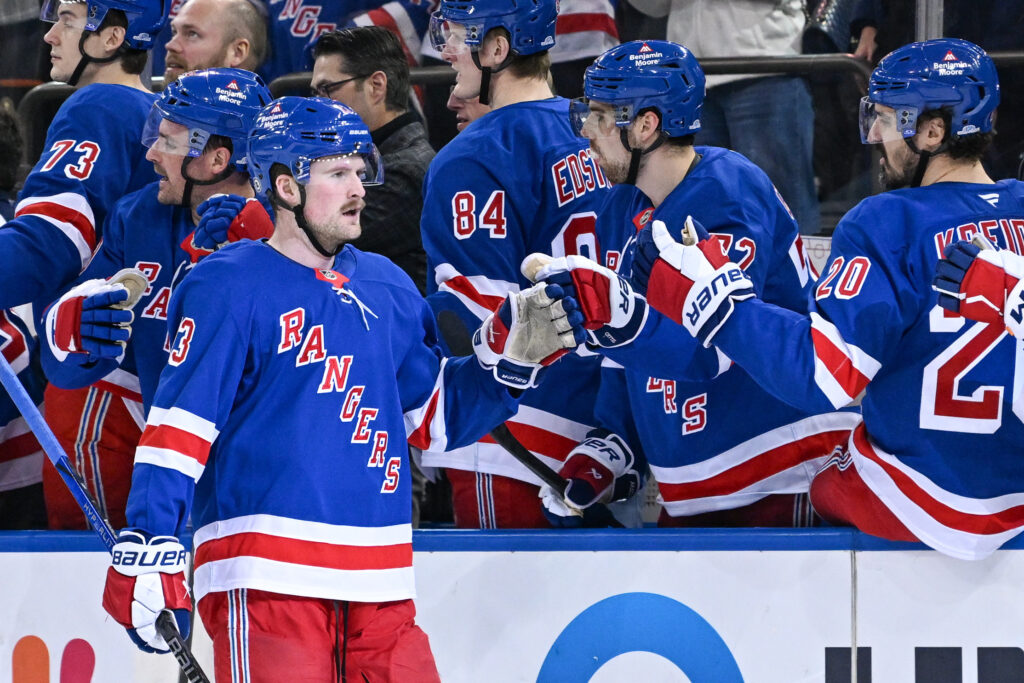
The brightest spot from last season’s wreckage was the emergence of Will Cuylle. The 6-foot-3, 212-pound winger had a true breakout campaign, posting career highs with 20 goals and 45 points. But it was his physical dominance—a franchise-record 301 hits—and his team-best plus-12 rating that truly turned heads. He earned trust on the power play, the penalty kill, and in the top six. Having signed a two-year, $7.8 million bridge deal, Cuylle is the quintessential modern power forward, blending skill with brute force. He is a player on a steep upward trajectory, and a mid-20s goal total is a reasonable expectation.
Also on the EDGE – The Kids Are Coming: Who Will Seize a Roster Spot for the Rangers in 2025-26?
The New-Look Bottom Six: A Commitment to Size and Sandpaper
For years, the Rangers have been accused of being too soft in their bottom six. That narrative is set to change. The fourth line is projected to be a physically punishing, forechecking nightmare for opponents. Anchored by the dependable Sam Carrick, who is coming off a career year and won over 54% of his draws, the line is flanked by two behemoths. At 6-foot-7, Adam Edström is a physical force with more polish to his game than you’d expect, possessing good skating for his size. On the other side is the towering Matt Rempe. The 6-foot-9 forward is a fan favorite for his work ethic and physical presence. While his primary role is intimidation, he has a surprising touch around the net and could chip in with double-digit goals. The key for Rempe will be maintaining discipline, as Coach Sullivan will not tolerate a parade to the penalty box.
Competition for the remaining spots will be fierce. Newcomer Taylor Raddysh, signed to a cheap two-year deal, brings size, speed, and a track record of secondary scoring, having put up 27 points with Washington last season. Young guns like Brett Berard and Brennan Othmann showed flashes of potential last season and will be pushing hard for regular ice time. Berard provides energy and production on an entry-level contract, while Othmann looked good in minutes alongside Panarin down the stretch. Others, like Juuso Pärssinen, Jonny Brodzinski, and Justin Dowling, provide valuable depth but will need to have strong training camps to secure their roles.
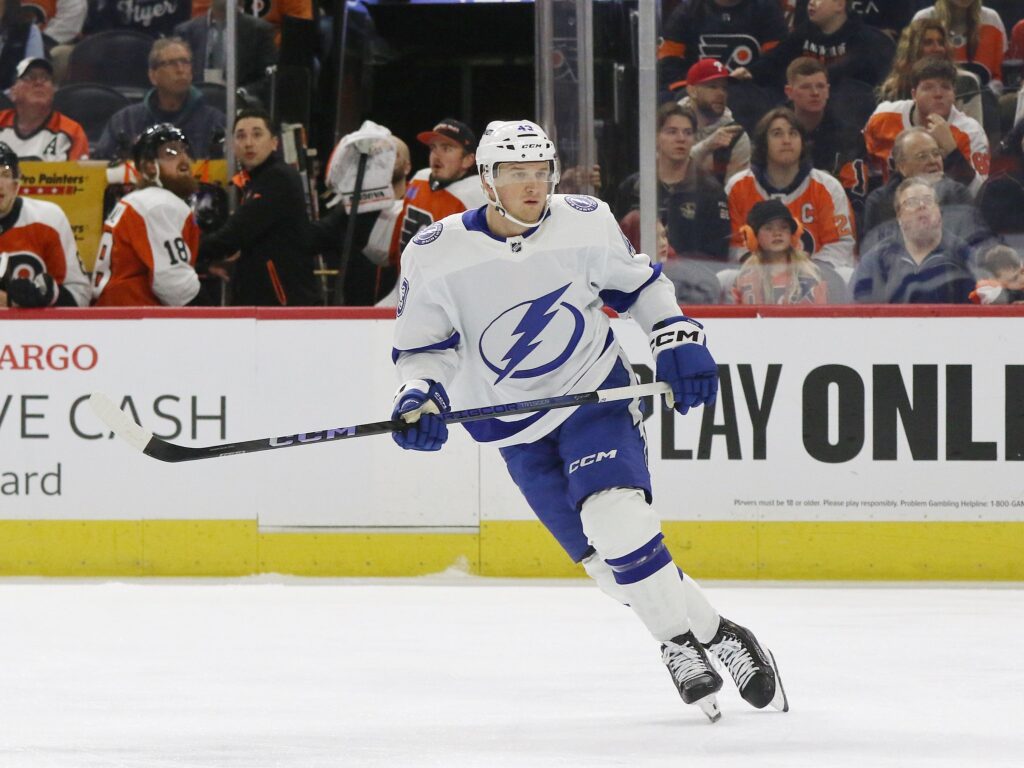
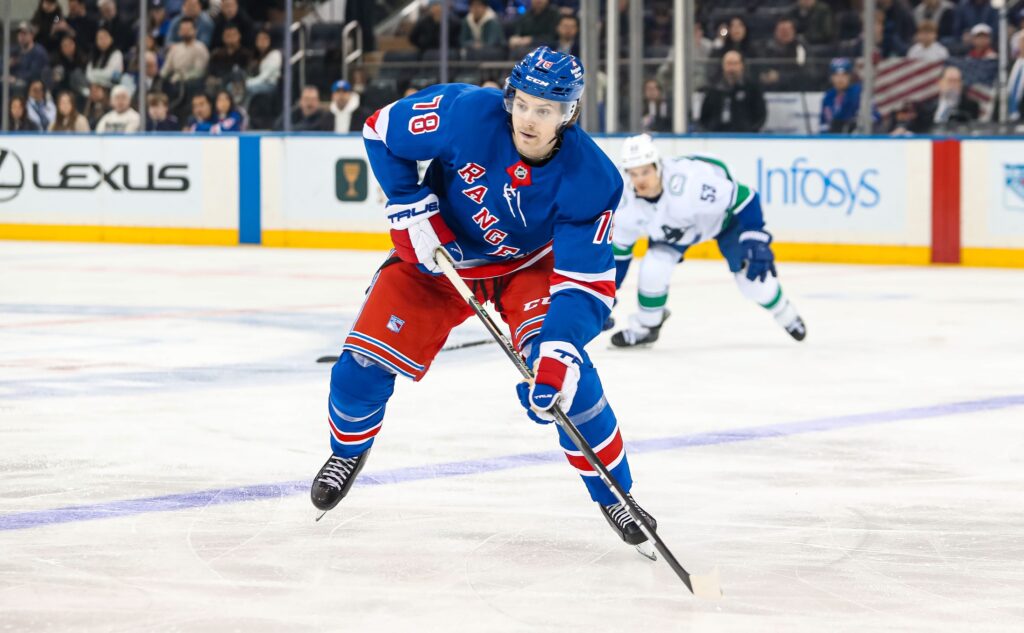
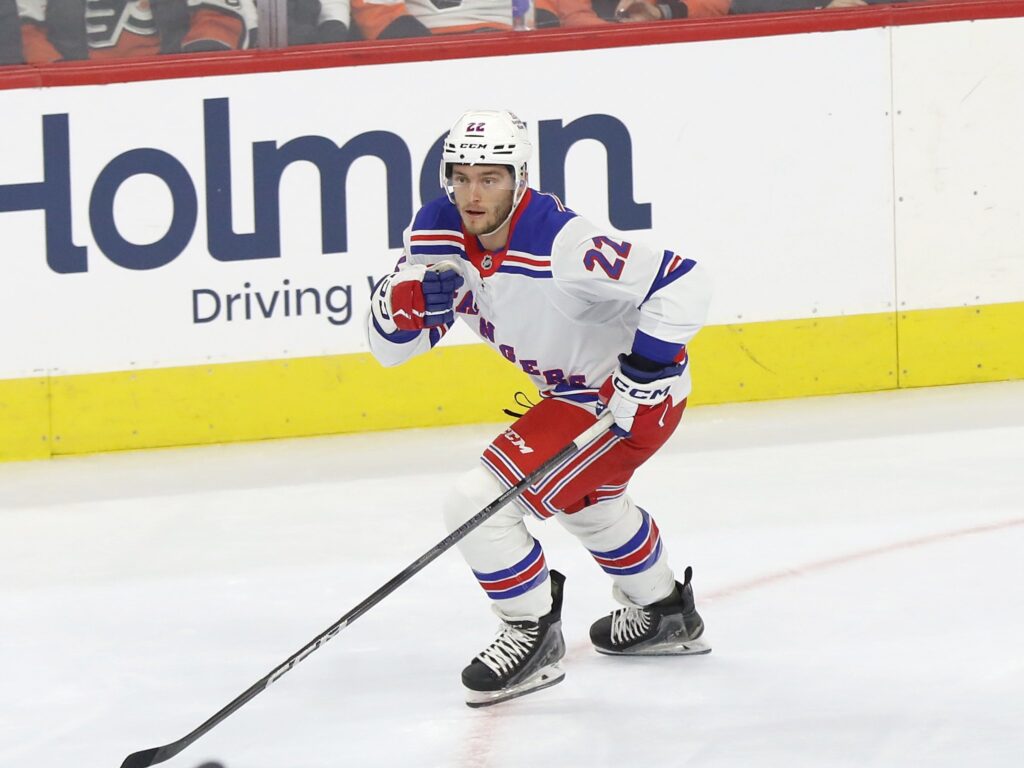
Also on the EDGE – Blueshirts’ Crossroads: Burning Questions for the 2025-26 Rangers
Sullivan’s Blueprint: Projecting the Lines
Mike Sullivan will have some fascinating decisions to make when constructing his lineup. The most critical choice revolves around where to deploy his star power. Does he load up a super-line, or aim for a more balanced attack?
Here are a couple of potential combinations:
Option 1: The Super-Line
- Panarin – J.T. Miller – Lafrenière
- Cuylle – Trocheck – Perreault
- Berard – Zibanejad – Raddysh
- Edström – Carrick – Rempe
This setup puts three elite offensive talents together on the top line, creating a matchup nightmare for any opponent. It also allows the highly-touted prospect Gabriel Perreault, known for his elite vision, to potentially slide into a top-six role alongside the steady Trocheck. The key here is Zibanejad centering a third line, giving the Rangers incredible scoring depth throughout the lineup.
Option 2: Balanced Scoring
- Panarin – J.T. Miller – Othmann
- Lafrenière – Zibanejad – Perreault
- Cuylle – Trocheck – Raddysh
- Edström – Carrick – Rempe
This alignment spreads the wealth. It keeps the potent Panarin-Miller duo together while giving Lafrenière a chance to drive his own line with Zibanejad as his center. This could be the optimal way to get both Lafrenière and Zibanejad back to their peak performance levels. The third line of Cuylle, Trocheck, and Raddysh becomes a formidable checking line that can also score.
The Final Verdict
On paper, this Rangers forward group is deeper, tougher, and more balanced than the one that stumbled through last season. The combination of Miller’s leadership, Zibanejad’s expected rebound, and Cuylle’s continued ascent provides a solid foundation. The ultimate success of this group, however, will hinge on two key factors: Panarin’s contract situation and the development of the team’s youth. If Panarin plays inspired hockey in his contract year and youngsters like Perreault and Lafrenière take significant steps forward under Sullivan’s guidance, the Blueshirts will be right back in the thick of the playoff hunt. The disaster of 2024-25 may soon be a distant memory on Broadway.
Created with the aid of Gemini AI
